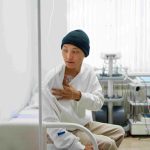A study by researchers at NYU Langone Health has uncovered new insights into why some cancer patients respond better to PARP inhibitors—a class of precision drugs that target cancer cells’ ability to repair DNA damage—while others do not. The findings, published recently in Nature, could pave the way for more personalised cancer therapies.
The research focuses on BRCA2, a well-known gene involved in repairing DNA damage in cells. When this gene is mutated, as it often is in cancers such as breast, ovarian, prostate, and pancreatic, its repair function is compromised. This forces cancer cells to rely on an alternative DNA repair mechanism involving the enzyme PARP1. PARP inhibitors are designed to block this backup route, effectively killing cancer cells that are already deficient in BRCA2.
However, not all patients with BRCA2-related cancers respond equally well to PARP inhibitors—a puzzle that this new research set out to solve.
Using cutting-edge single-molecule imaging technology developed at NYU Langone, the researchers discovered that BRCA2 doesn’t just help repair DNA. It also plays a critical role in regulating the activity of PARP1. Specifically, the study found that functional BRCA2 acts like a “molecular shield,” preventing PARP1 from accumulating at sites of DNA damage. This protection allows another key repair protein, RAD51, to access the site and complete the repair process.
In contrast, when BRCA2 is mutated or absent, PARP1 lingers at the damage sites, obstructing RAD51 and leading to the accumulation of lethal DNA breaks—precisely the condition that PARP inhibitors exploit to kill cancer cells.
“This finding changes our understanding of how BRCA2 influences cancer cell survival,” said senior author Dr. Eli Rothenberg, professor at NYU Grossman School of Medicine and director of the Single Molecule Biophotonics program. “It’s a critical piece of the puzzle in understanding why some tumors are sensitive to PARP inhibitors while others are not.”
The implications for treatment are significant. “The study suggests that evaluating the level of BRCA2 function in tumors could help predict whether a patient will benefit from PARP inhibitors,” said lead author Dr. Sudipta Lahiri, a postdoctoral fellow at NYU Langone. “It’s a step toward more individualised cancer care.”
The research was conducted in collaboration with scientists from Yale University and was supported by grants from the National Institutes of Health, the V Foundation, and other philanthropic organizations.
According to prior studies, between 6% and 20% of cancers such as breast, ovarian, prostate, and pancreatic involve BRCA2 mutations, either inherited or acquired. As researchers continue to explore the molecular mechanisms of DNA repair, this new understanding of BRCA2’s dual role could unlock new strategies to overcome drug resistance and improve outcomes for cancer patients.
“This work exemplifies our broader effort at NYU Langone and the Perlmutter Cancer Center to connect molecular research to clinical advances,” added Dr. Rothenberg. “By translating these discoveries into diagnostics and therapies, we hope to make a tangible difference in patients’ lives.”





